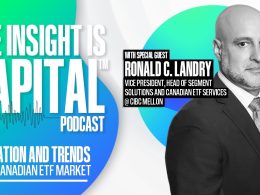High-Income 2017 Outlook: Rosy or Rough?
by Erin Bigley, Fixed Income, AllianceBernstein
So following the election, we think that the range of potential outcomes has really widened. What the market is pricing in, knowing that we’ve got a Trump administration and a Republican Congress, is a pro-growth, moderate-increase-in-inflation type of environment, which is good for risk assets like high-yield bonds.
What is not necessarily being recognized or priced into the markets is the potential for a larger negative tail.
If things don’t work out as rosy as currently priced in—and we see a geopolitical event or we see growth not picking up as we expect—that downside tail could be much bigger.
And so what do you do in that environment? You do still want to lean into growth assets, risk assets—like high yield—because the potential upside is still there, but you want to try to find ways to buffer the downside.
To us, that means shorten up your maturities and go higher quality. We have seen time after time that just taking those two simple steps, focusing on shorter maturities and raising the quality of a high-yield portfolio, can actually buffer the downside, giving you roughly two-thirds of the downside in a high-volatility environment, with about 80% or so of the upside.
The other thing that you can do within a higher-yielding portfolio is to think beyond just corporate high yield. Corporate high yield has been on a great tear so far this year—it’s up about 15% for the year to date and it’s been rising largely on the back of lower-quality, energy-driven sectors.
At this point, it’s a great time to take a step back and think about what’s the best strategy going forward? And we think looking beyond the corporate high-yield sector to other bonds that have high yields but are in different areas.
For example, the emerging markets have sold off—pretty meaningfully—in the wake of the election, so we’ve been adding some local-currency emerging-market bonds to the portfolio and actually keeping some unhedged currency, which provides you with yield in a different way from corporates and it gives you some nice liquidity, particularly in the currency.
The other thing that we’ve been doing is to look to additional sectors, like the mortgage market in the United States. Now these aren’t your low-yielding guaranteed agency pass-throughs. These are credit risk–sharing transactions, or CRTs. They’re issued by Fannie and Freddie, but they have some credit risk associated with them. But, accordingly, you’re being paid high-yield-like yields.
The other thing we really like about CRTs is that, number one, the fundamentals are solid. The US real estate market continues to improve, and so you’re tapping into a fundamentally improving sector. Also, they’re floating-rate securities. So they’re tied to a floating-rate one-month LIBOR. So in the environment that we’ve seen of rising rates, these securities should be buffered.
Going into 2017, we think it still makes sense to have a bias within your fixed-income portfolio to be overweight growth assets, credit assets—like higher-yielding bonds.
But you need to be very focused and very selective on what types of high-yield bonds do you own. So you want to make sure you’re avoiding the lowest-quality sectors. You want to make sure you’re not going too far out in terms of maturities. You want to make sure that you’re not owning too much in the corporate-only sector and that you’re looking farther afield, whether that be through geography—by looking to the emerging markets—or looking to other sectors like securitizations, where we’re tapping into credit risk–sharing mortgage transactions.
The views expressed herein do not constitute research, investment advice or trade recommendations and do not necessarily represent the views of all AB portfolio-management teams.
Copyright © AllianceBernstein
















